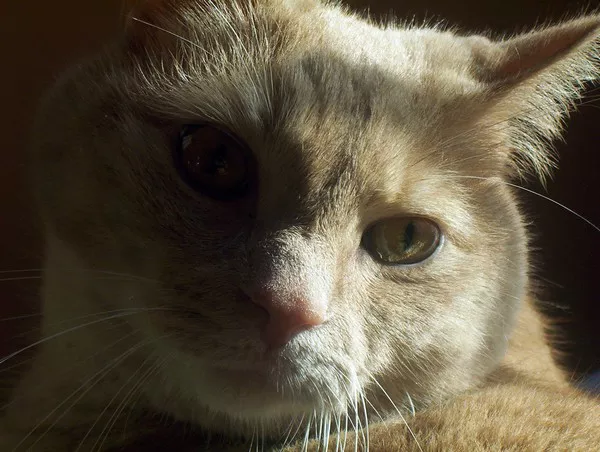Ragdoll cats are known for their docile and affectionate nature. However, some Ragdoll owners may find their furry friends displaying unexpected mean or aggressive behaviors. This article explores the reasons why your Ragdoll cat is so mean and provides training tips to manage and correct it.
Common Reasons for Aggressive Behavior in Ragdoll Cats
1. Health Issues
Health problems can often be the root cause of sudden aggressive behavior in cats. Conditions like dental problems, arthritis, or infections can cause pain and discomfort, leading to irritability and aggression. It’s important to take your Ragdoll to the vet for a thorough check-up to rule out any medical issues.
2. Lack of Socialization
Ragdoll cats that haven’t been properly socialized may exhibit fear-based aggression. Proper socialization from a young age is crucial to help them feel comfortable around people and other animals. Without it, they may react defensively to unfamiliar situations or individuals.
3. Territorial Behavior
Cats are naturally territorial animals. If your Ragdoll feels that its territory is being threatened, it may become aggressive. This can be triggered by the presence of new pets, changes in the household, or even unfamiliar people entering their space.
4. Environmental Stress
Changes in the environment, such as moving to a new home, rearranging furniture, or introducing new pets, can cause stress in cats. This stress can manifest as aggressive behavior as the cat tries to cope with the new situation.
5. Lack of Stimulation
Ragdolls are intelligent and active cats that require mental and physical stimulation. Boredom can lead to frustration and aggression. Ensuring your cat has plenty of toys, scratching posts, and interactive playtime can help reduce these behaviors.
Training Tips to Manage and Correct Aggressive Behavior
1. Provide Adequate Socialization
Early socialization is key to preventing aggressive behavior. Introduce your Ragdoll kitten to various people, animals, and environments to help them feel secure and confident. Positive experiences during this critical period will shape their behavior as adults.
2. Create a Safe and Secure Environment
Ensure that your Ragdoll has a designated safe space where they can retreat and feel secure. This can be a quiet room with their bed, toys, and litter box. Having a consistent and stable environment will help reduce stress-induced aggression.
3. Use Positive Reinforcement
Reward your Ragdoll for good behavior with treats, praise, and affection. Positive reinforcement helps build a positive association with desired behaviors. Avoid using punishment, as it can increase fear and aggression.
4. Interactive Play
Engage your Ragdoll in regular interactive play sessions. Use toys that mimic the movement of prey, such as feather wands or laser pointers, to stimulate their hunting instincts. This will provide them with the necessary physical and mental exercise, reducing boredom and frustration.
5. Gradual Introductions
If you’re introducing new pets or people into your home, do so gradually. Allow your Ragdoll to get used to the new presence at their own pace. Use scent swapping techniques, such as exchanging bedding, to help them become familiar with the new addition’s scent.
6. Consult a Professional
If your Ragdoll’s aggression persists despite your efforts, consider consulting a professional animal behaviorist. They can provide personalized guidance and develop a behavior modification plan tailored to your cat’s specific needs.
See Also: How to Make Your Cat Healthy and Fat: A Comprehensive Guide
Additional Strategies for Managing Aggression
1. Maintain a Routine
Cats thrive on routine, and changes can be unsettling. Keep feeding times, play sessions, and other daily activities consistent to provide a sense of stability and security.
2. Reduce Stressors
Identify and eliminate potential stressors in your cat’s environment. This could include loud noises, overcrowded spaces, or interactions with aggressive animals. Creating a calm and peaceful atmosphere will help reduce your Ragdoll’s anxiety and aggression.
3. Provide Scratching Posts
Scratching is a natural behavior for cats and helps them mark their territory. Provide multiple scratching posts in different areas of your home to allow your Ragdoll to engage in this behavior without damaging furniture.
4. Offer High-Quality Diet
A well-balanced diet contributes to overall health and well-being. Ensure your Ragdoll is getting the necessary nutrients to support their physical and mental health. Consult your vet for dietary recommendations.
5. Monitor Playtime with Children
If you have children, supervise their interactions with your Ragdoll. Teach children how to handle and play with the cat gently and respectfully. Rough handling can lead to fear and aggression in cats.
6. Use Pheromone Diffusers
Pheromone diffusers, such as Feliway, can help create a calming environment for your cat. These products release synthetic versions of feline facial pheromones, which can reduce stress and aggression.
Understanding Cat Body Language
Learning to read your Ragdoll’s body language is crucial in preventing aggressive incidents. Some signs of an agitated or fearful cat include:
- Hissing and growling
- Flattened ears
- Dilated pupils
- Tensed body posture
- Swishing or puffed-up tail
Recognizing these signs can help you intervene before your cat escalates to aggressive behavior. When you see these signs, give your cat space and time to calm down.
Building Trust and Bonding with Your Ragdoll
1. Spend Quality Time Together
Spend regular, quality time with your Ragdoll to strengthen your bond. Gentle petting, brushing, and talking to your cat in a soothing voice can build trust and security.
2. Respect Their Space
Respect your cat’s personal space and allow them to approach you when they’re comfortable. Forcing interactions can lead to fear and aggression.
3. Use Gentle Handling
Always handle your Ragdoll gently and avoid sudden movements that could startle them. Supporting their body properly when picking them up will make them feel secure.
4. Offer Enrichment Activities
Provide various enrichment activities to keep your Ragdoll mentally stimulated. Puzzle feeders, treat-dispensing toys, and cat trees can keep them engaged and reduce boredom-related aggression.
Conclusion
While it can be disheartening to see your typically sweet Ragdoll cat displaying mean or aggressive behavior, understanding the root causes and implementing effective training tips can make a significant difference. By providing a safe, stimulating environment and using positive reinforcement, you can help your Ragdoll feel more secure and reduce aggressive tendencies. Remember, patience and consistency are key when addressing behavioral issues. If needed, seek professional help to ensure the well-being of your beloved feline companion.


























